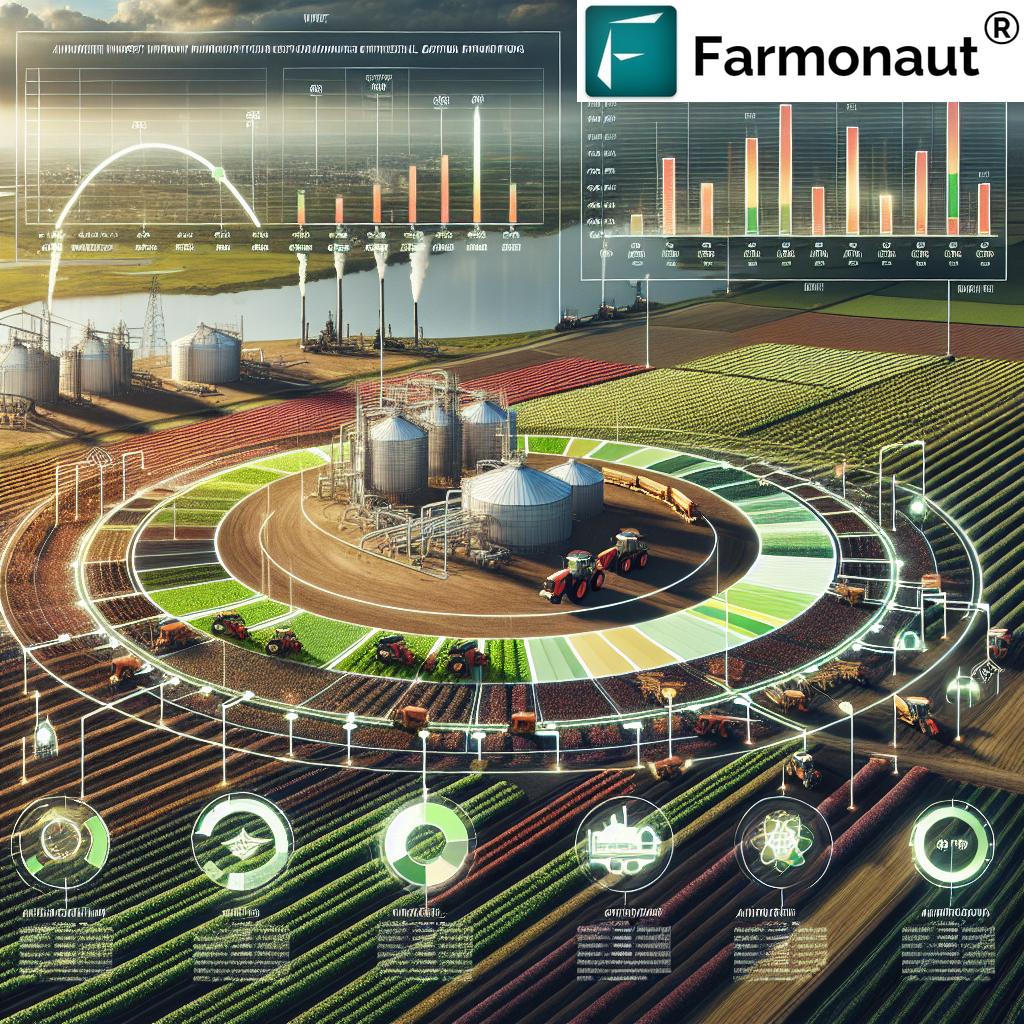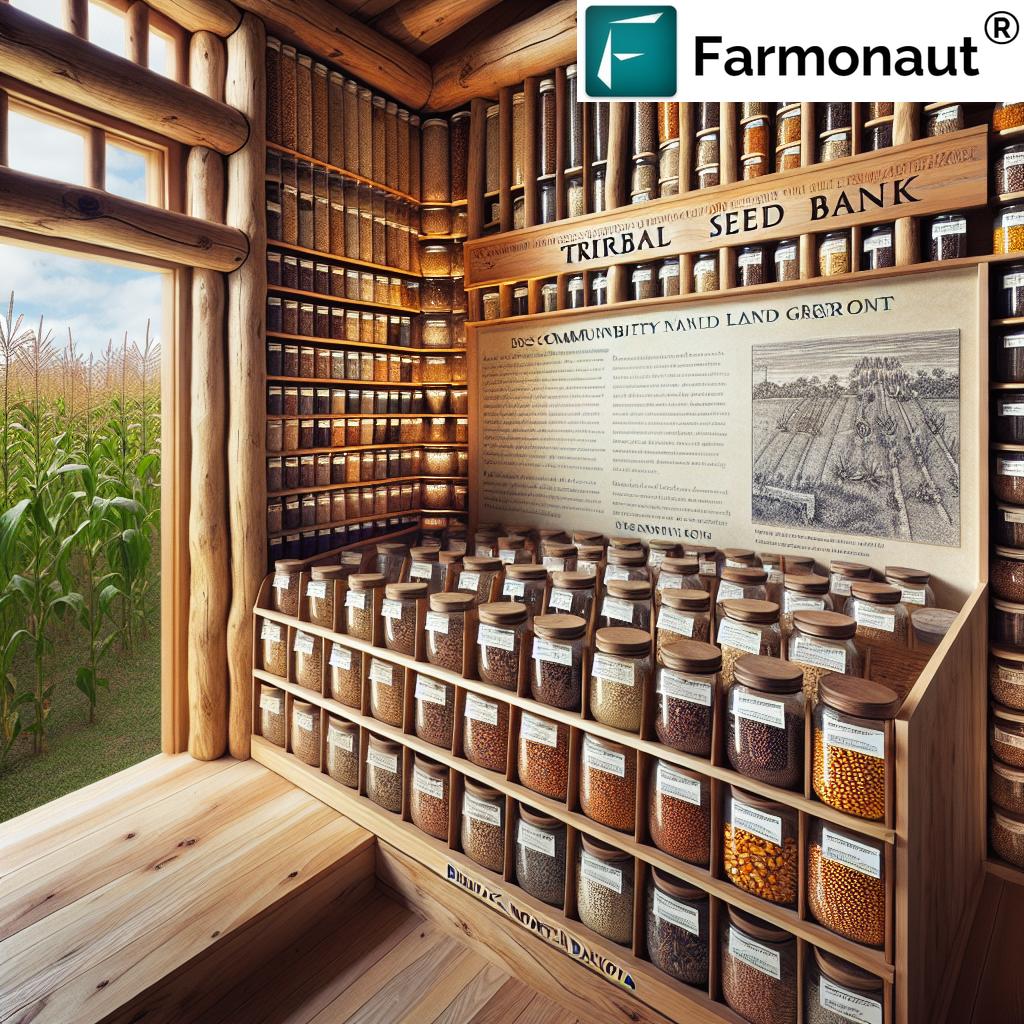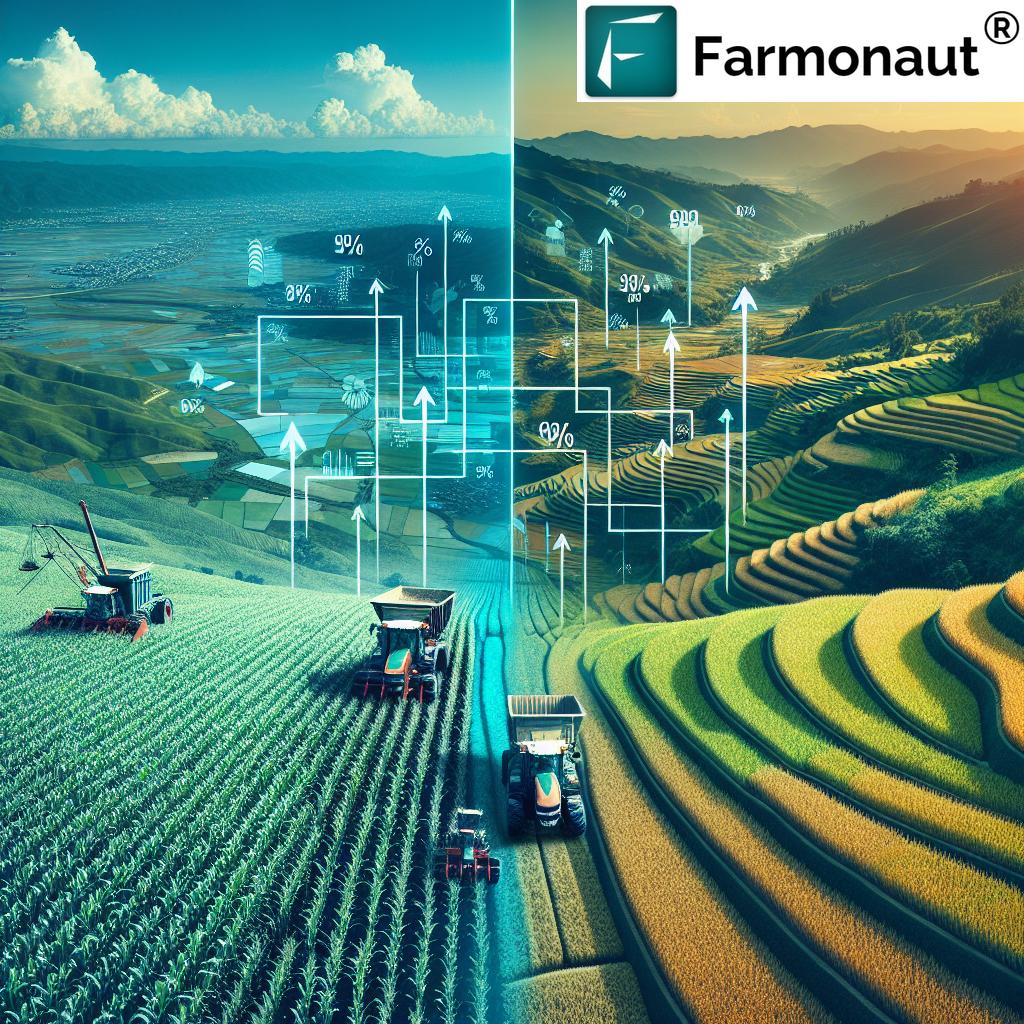Mastering Farm Management: A Comprehensive Guide to USDA FSA Programs and Digital Agriculture Solutions
“USDA FSA programs cover over 100 different types of assistance for farmers, from disaster relief to conservation efforts.”
In the ever-evolving landscape of agriculture, staying ahead of the curve is crucial for farmers and agricultural businesses alike. As we navigate the complexities of modern farming, we find ourselves at the intersection of traditional practices and cutting-edge technology. This comprehensive guide aims to shed light on the transformative power of precision agriculture technology and sustainable farming practices, with a special focus on USDA Farm Service Agency (FSA) programs and innovative digital agriculture solutions.
We’ll explore how these advancements are revolutionizing farm management in the United States, empowering farmers to make informed decisions, increase productivity, and promote sustainability. From crop monitoring systems to smart irrigation solutions, we’ll delve into the tools and techniques that are shaping the future of farming.
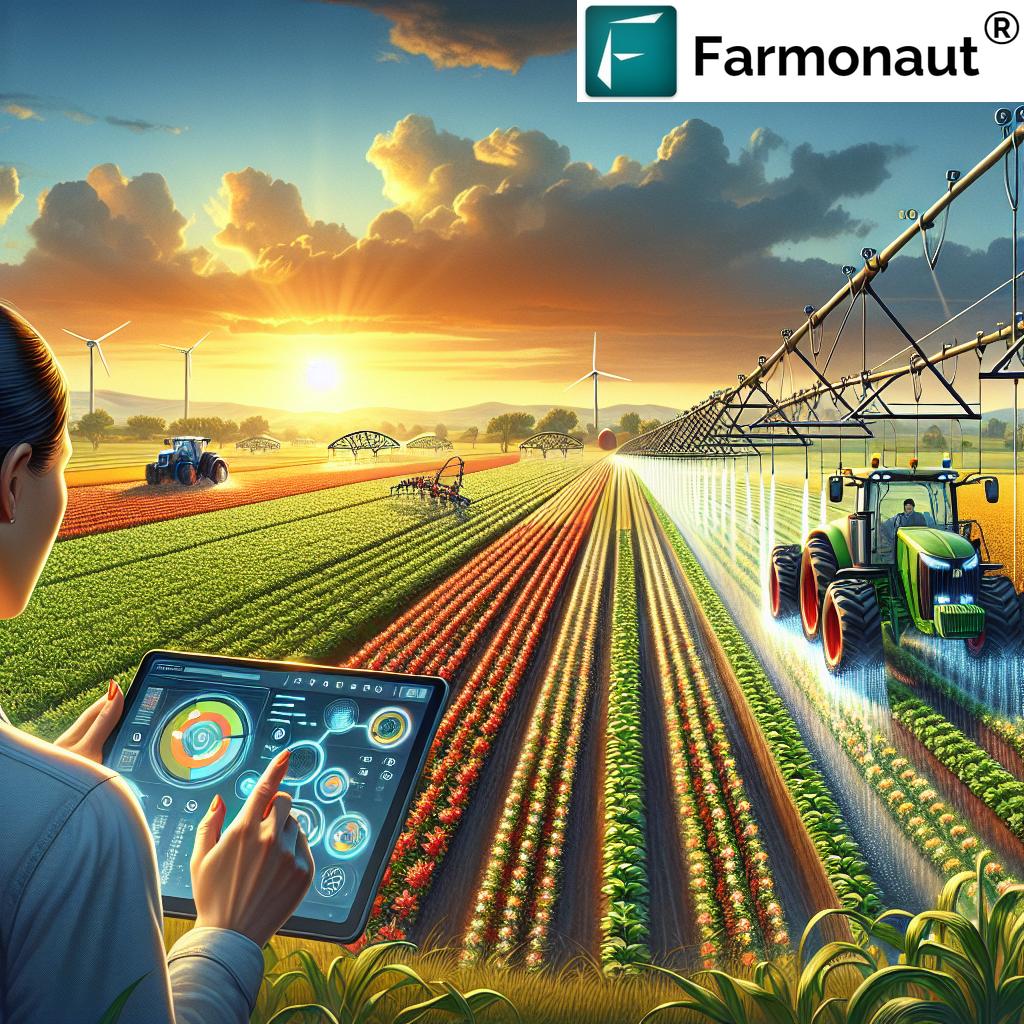
The Evolution of Farm Management
Farm management has come a long way from the days of relying solely on traditional knowledge and intuition. Today, we’re witnessing a paradigm shift in how farms are managed, thanks to the integration of digital technologies and data-driven decision-making processes. This evolution is not just about adopting new tools; it’s about embracing a new mindset that combines the wisdom of generations with the precision of modern science.
The Role of USDA FSA Programs
The United States Department of Agriculture’s Farm Service Agency (FSA) plays a pivotal role in supporting American farmers and ranchers. Through a wide array of programs, the FSA provides essential assistance in areas such as:
- Disaster recovery
- Conservation efforts
- Commodity price support
- Farm loans
- Income support
These programs are designed to help farmers navigate the challenges of modern agriculture, from economic fluctuations to natural disasters. By understanding and utilizing these resources, farmers can build more resilient and sustainable operations.
The Rise of Digital Agriculture Solutions
Alongside government support, the private sector has been driving innovation in farm management through digital agriculture solutions. These technologies are transforming every aspect of farming, from planting to harvest. Let’s explore some of the key areas where digital solutions are making a significant impact:
1. Precision Agriculture Technology
Precision agriculture technology is at the forefront of the farming revolution. By leveraging GPS, sensors, and data analytics, farmers can optimize their operations with unprecedented accuracy. This approach allows for:
- Targeted application of inputs (fertilizers, pesticides, water)
- Improved crop yields
- Reduced environmental impact
- Cost savings through efficient resource use
One of the pioneers in this field is Farmonaut, offering advanced satellite-based farm management solutions. Their platform integrates innovative technology with data-driven insights, making precision agriculture accessible to farmers worldwide.
2. Crop Monitoring Systems
Modern crop monitoring systems use a combination of satellite imagery, drones, and ground sensors to provide real-time data on crop health and development. These systems offer:
- Early detection of pests and diseases
- Accurate yield predictions
- Optimization of harvest timing
- Improved crop quality management
Farmonaut’s satellite-based crop health monitoring is a prime example of this technology in action. By analyzing multispectral satellite images, farmers gain valuable insights into vegetation health, soil moisture levels, and other critical metrics.
3. Smart Irrigation Solutions
Water management is a critical aspect of farming, especially in regions facing water scarcity. Smart irrigation solutions combine weather data, soil moisture sensors, and automated irrigation systems to:
- Optimize water usage
- Prevent over or under-watering
- Reduce water-related stress on crops
- Improve overall water efficiency on the farm
These systems not only conserve water but also contribute to better crop yields and quality.
4. Farm Data Analytics
The power of big data has reached the farm. Farm data analytics tools collect and analyze vast amounts of information from various sources, including:
- Weather patterns
- Soil conditions
- Crop performance
- Market trends
By leveraging this data, farmers can make more informed decisions about planting, crop management, and marketing strategies. Farmonaut’s Jeevn AI Advisory System is an excellent example of how AI-driven analytics can provide personalized farm advice and real-time insights.
5. Climate-Smart Agriculture
As climate change continues to impact farming worldwide, climate-smart agriculture techniques are becoming increasingly important. These approaches focus on:
- Reducing greenhouse gas emissions from farming activities
- Adapting to changing climate conditions
- Increasing agricultural productivity sustainably
Digital tools play a crucial role in implementing climate-smart practices by providing accurate data on weather patterns, soil health, and crop resilience.
“Precision agriculture technology can increase crop yields by up to 30% while reducing water usage by 20-50%.”
Integrating USDA FSA Programs with Digital Agriculture Solutions
The synergy between government support programs and digital agriculture solutions can significantly enhance farm management practices. Here’s how farmers can leverage both to maximize their benefits:
1. Conservation Programs and Precision Agriculture
USDA FSA offers various conservation programs aimed at protecting natural resources. By combining these programs with precision agriculture technology, farmers can:
- Implement targeted conservation practices
- Reduce environmental impact while maintaining productivity
- Qualify for additional financial incentives
For example, using Farmonaut’s satellite-based monitoring can help farmers accurately track and report on conservation efforts, potentially increasing their eligibility for USDA conservation programs.
2. Disaster Assistance and Crop Monitoring
The FSA provides disaster assistance to farmers affected by natural calamities. Advanced crop monitoring systems can complement these programs by:
- Providing early warning of potential crop damage
- Accurately assessing the extent of damage for insurance claims
- Helping farmers make timely decisions to mitigate losses
Farmonaut’s real-time crop health monitoring can be an invaluable tool in disaster preparedness and recovery efforts.
3. Commodity Programs and Market Analytics
FSA’s commodity programs provide price support and income protection for farmers. By integrating these programs with farm data analytics tools, farmers can:
- Make more informed decisions about crop selection and rotation
- Optimize their participation in government programs
- Better understand market trends and price fluctuations
Farmonaut’s data analytics capabilities can help farmers analyze historical yield data and market trends, complementing the financial safety net provided by FSA programs.
4. Farm Loans and Financial Management
The FSA offers various loan programs to support farmers. Digital agriculture solutions can enhance the effectiveness of these programs by:
- Providing accurate farm performance data for loan applications
- Helping farmers create more robust business plans
- Assisting in financial management and budgeting
Farmonaut’s platform can generate detailed reports on farm productivity and resource utilization, which can be valuable when applying for FSA loans or managing farm finances.
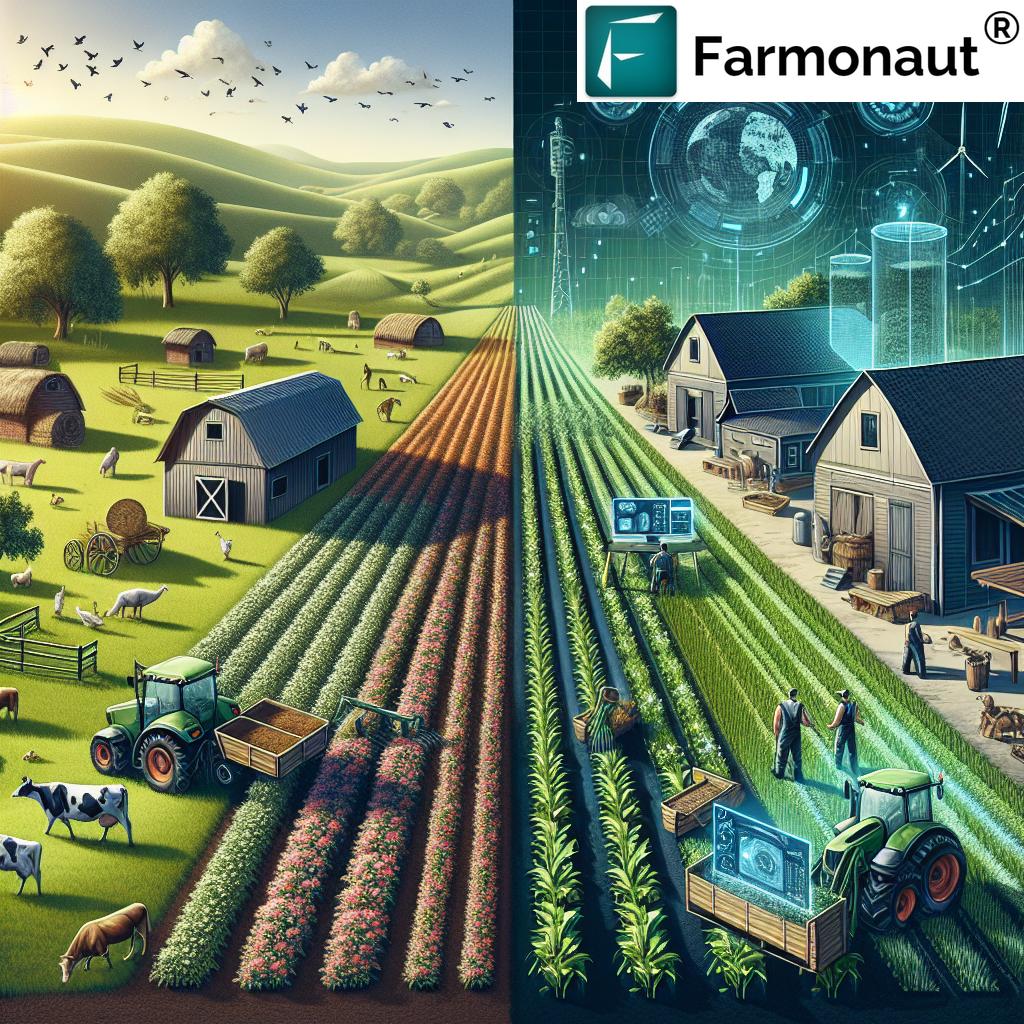
Emerging Trends in Digital Agriculture
As we look to the future of farm management, several emerging trends are shaping the landscape of digital agriculture:
1. Agricultural Drone Applications
Drones are revolutionizing farm management by providing high-resolution imagery and data collection capabilities. They offer:
- Precise crop scouting
- Targeted spraying of pesticides and fertilizers
- 3D mapping for terrain analysis
- Livestock monitoring
While Farmonaut primarily uses satellite imagery, the integration of drone data can provide an additional layer of precision for farm management.
2. Soil Health Analysis Tools
Advanced soil testing and analysis tools are becoming more sophisticated, allowing farmers to:
- Assess soil nutrient levels with greater accuracy
- Monitor soil microbial activity
- Optimize soil management practices
- Improve overall soil health and fertility
These tools complement Farmonaut’s satellite-based soil moisture analysis, providing a comprehensive view of soil conditions.
3. Blockchain for Agricultural Traceability
Blockchain technology is making waves in agriculture by enhancing traceability and transparency in the supply chain. This technology offers:
- Improved food safety through traceable product journeys
- Enhanced consumer trust
- Streamlined supply chain management
- Reduced fraud in agricultural products
Farmonaut’s blockchain-based product traceability solution is at the forefront of this trend, ensuring transparency from farm to consumer.
4. Artificial Intelligence in Farm Management
AI is transforming farm management by providing predictive analytics and automated decision-making support. AI applications in agriculture include:
- Crop yield prediction
- Pest and disease detection
- Automated irrigation management
- Robotic harvesting
Farmonaut’s Jeevn AI Advisory System exemplifies how AI can provide personalized farm management advice, enhancing decision-making processes for farmers.
Sustainable Farming Practices and Digital Solutions
The integration of digital agriculture solutions with sustainable farming practices is creating a new paradigm in agriculture. This synergy is crucial for addressing global challenges such as food security, climate change, and resource conservation. Let’s explore how digital tools are supporting key sustainable farming practices:
1. Organic Farming
Digital agriculture tools are proving invaluable for organic farmers by:
- Monitoring soil health without chemical inputs
- Predicting pest and disease outbreaks for timely organic interventions
- Optimizing crop rotations and cover crop management
- Ensuring compliance with organic certification requirements
Farmonaut’s satellite-based monitoring can help organic farmers track crop health and soil conditions, supporting their organic management practices.
2. Regenerative Agriculture
Regenerative agriculture focuses on improving soil health and biodiversity. Digital tools support these practices by:
- Tracking soil carbon sequestration
- Monitoring biodiversity indicators
- Optimizing cover crop management
- Assessing the impact of no-till practices
Farmonaut’s platform can provide valuable insights into soil health and vegetation cover, supporting farmers in their regenerative agriculture efforts.
3. Precision Livestock Farming
Digital solutions are not limited to crop farming; they’re also revolutionizing livestock management:
- Real-time monitoring of animal health and behavior
- Optimizing feed management and grazing patterns
- Improving breeding programs through data analysis
- Enhancing overall herd management efficiency
While Farmonaut primarily focuses on crop monitoring, its fleet and resource management tools can be valuable for large-scale livestock operations.
Navigating USDA FSA Programs for Maximum Benefit
Understanding and effectively utilizing USDA FSA programs is crucial for American farmers. Here’s a guide to some key programs and how digital agriculture solutions can enhance their implementation:
1. Price Support and Income Protection Programs
FSA offers various programs to protect farmers from market fluctuations and income loss:
- Agriculture Risk Coverage (ARC)
- Price Loss Coverage (PLC)
- Dairy Margin Coverage (DMC)
Digital farm management tools can help farmers analyze historical yield data and market trends, aiding in program selection and participation strategies.
2. Conservation Programs
FSA’s conservation programs aim to protect natural resources while supporting agricultural productivity:
- Conservation Reserve Program (CRP)
- Conservation Reserve Enhancement Program (CREP)
- Emergency Conservation Program (ECP)
Precision agriculture technology, such as Farmonaut’s satellite monitoring, can help farmers implement and track conservation practices more effectively, potentially increasing their eligibility for these programs.
3. Disaster Assistance Programs
FSA provides crucial support for farmers affected by natural disasters:
- Livestock Indemnity Program (LIP)
- Emergency Assistance for Livestock, Honeybees, and Farm-Raised Fish Program (ELAP)
- Noninsured Crop Disaster Assistance Program (NAP)
Advanced crop monitoring systems can provide accurate, timely data on crop damage, streamlining the process of applying for disaster assistance.
4. Farm Loan Programs
FSA offers various loan programs to support farmers and ranchers:
- Farm Ownership Loans
- Farm Operating Loans
- Microloans
- Emergency Loans
Digital agriculture solutions can help farmers maintain detailed records of farm operations and financial performance, strengthening loan applications and financial management.
Empowering Farmers with Digital Tools: The Farmonaut Advantage
In the realm of digital agriculture solutions, Farmonaut stands out as a comprehensive platform that addresses multiple aspects of modern farm management. Let’s explore how Farmonaut’s features align with the needs of today’s farmers:
1. Satellite-Based Crop Health Monitoring
Farmonaut’s core technology provides farmers with:
- Real-time vegetation health indices (NDVI)
- Soil moisture level analysis
- Early detection of crop stress and diseases
- Historical data for trend analysis
This information enables farmers to make timely interventions, optimize resource use, and improve overall crop yields.
2. AI-Driven Advisory System
The Jeevn AI system offers:
- Personalized crop management strategies
- Weather forecasts and alerts
- Pest and disease risk assessments
- Customized recommendations based on farm-specific data
This AI-powered tool acts as a virtual agronomist, providing expert advice tailored to each farm’s unique conditions.
3. Blockchain-Based Traceability
Farmonaut’s blockchain solution offers:
- Transparent supply chain tracking
- Enhanced food safety and quality assurance
- Improved consumer trust and brand value
- Efficient management of certifications and compliance
This feature is particularly valuable for farmers looking to differentiate their products in the market and meet growing consumer demands for transparency.
4. Resource and Fleet Management
For larger operations, Farmonaut provides:
- Efficient tracking and management of agricultural machinery
- Optimization of vehicle routes and usage
- Improved operational safety
- Cost reduction through better resource allocation
These tools help agribusinesses streamline their operations and reduce overhead costs.
5. Carbon Footprint Tracking
As sustainability becomes increasingly important, Farmonaut offers:
- Real-time monitoring of carbon emissions
- Tools for implementing and tracking sustainable practices
- Support for carbon credit programs
- Compliance assistance for environmental regulations
This feature helps farmers align their operations with global sustainability goals and potentially access new revenue streams through carbon markets.
Comparison of Digital Agriculture Solutions for Farm Management
| Solution Type | Key Features | Primary Benefits | Ideal Farm Size |
|---|---|---|---|
| Crop Monitoring Systems | Satellite imagery, drone mapping, ground sensors | Early pest detection, yield prediction, resource optimization | Small to Large |
| Smart Irrigation Solutions | Soil moisture sensors, weather data integration, automated controls | Water conservation, improved crop health, reduced labor | Medium to Large |
| Farm Data Analytics Tools | Big data processing, AI-driven insights, predictive modeling | Informed decision-making, risk management, performance tracking | All Sizes |
| Agricultural Drone Applications | High-resolution imaging, precision spraying, 3D mapping | Targeted crop management, efficient scouting, terrain analysis | Medium to Large |
| Soil Health Analysis Tools | Advanced soil testing, microbial analysis, nutrient tracking | Improved soil fertility, sustainable land management, optimized inputs | All Sizes |
Integrating Farmonaut with Your Farm Operations
Adopting Farmonaut’s digital agriculture solutions can significantly enhance your farm management practices. Here’s how you can get started:
- Web Application: Access Farmonaut’s full suite of tools through their user-friendly web interface.
- Mobile Apps: Stay connected on-the-go with Farmonaut’s Android and iOS applications.
- API Integration: For advanced users, Farmonaut offers API access to integrate their data with other farm management systems.
To explore Farmonaut’s offerings, you can access their platforms through the following links:
Web App | Android App | iOS App | API | API Developer Docs
Conclusion: Embracing the Future of Farm Management
As we’ve explored throughout this guide, the integration of USDA FSA programs with cutting-edge digital agriculture solutions represents the future of farm management. By leveraging these resources and technologies, farmers can:
- Increase productivity and efficiency
- Enhance sustainability and environmental stewardship
- Improve financial stability and risk management
- Stay competitive in a rapidly evolving agricultural landscape
The key to success lies in embracing these tools and programs while adapting them to the unique needs of each farm. Whether you’re managing a small organic operation or overseeing large-scale commodity crops, there are digital solutions and government programs available to support your goals.
As we look to the future, the continued evolution of precision agriculture technology, sustainable farming practices, and supportive government policies will play a crucial role in addressing global food security challenges while preserving our natural resources for generations to come.
By staying informed, adaptable, and open to innovation, farmers can not only survive but thrive in this new era of digital agriculture. The journey towards mastering farm management is ongoing, but with the right tools and knowledge, the path to success is clearer than ever before.
Farmonaut Subscription Options
Frequently Asked Questions (FAQ)
Q: How can digital agriculture solutions help small-scale farmers?
A: Digital agriculture solutions can benefit small-scale farmers by providing affordable access to precision farming techniques, improving resource management, and offering valuable insights for decision-making. Many platforms, including Farmonaut, offer scalable solutions suitable for farms of all sizes.
Q: Are USDA FSA programs compatible with organic farming practices?
A: Yes, many USDA FSA programs are compatible with organic farming practices. The FSA offers specific programs and resources for organic farmers, including certification cost-share programs and conservation initiatives tailored to organic production methods.
Q: How can I integrate Farmonaut’s solutions with my existing farm management software?
A: Farmonaut offers API access, allowing for integration with other farm management systems. You can find detailed information on API integration in their API Developer Docs.
Q: What types of farms can benefit most from precision agriculture technology?
A: While farms of all types and sizes can benefit from precision agriculture technology, it’s particularly valuable for:
- Large-scale commodity crop producers
- High-value specialty crop growers
- Farms in areas with variable soil conditions or challenging climates
- Operations focused on sustainability and resource optimization
Q: How often is satellite data updated in Farmonaut’s crop monitoring system?
A: The frequency of satellite data updates can vary depending on the subscription plan and specific location. Generally, Farmonaut provides updates every few days, ensuring farmers have access to recent and relevant data for decision-making.






